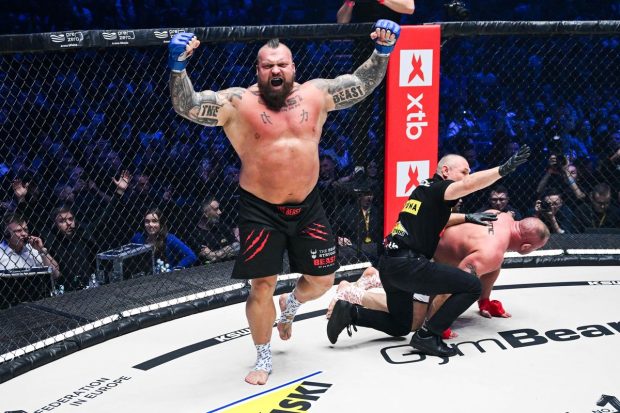

What’s different about the Maple Leafs in these playoffs?
After a midseason tweak, it might be their power play.
The Leafs won Game 1 in large part because their power play scored three times in six tries. They all but put away Sunday night’s opener with consecutive power-play goals, three minutes apart, in the second.
Advertisement
That’s no small development for this particular team — and a formidable weapon, perhaps, for a more successful postseason.
“Our power play was obviously very good tonight,” Leafs coach Craig Berube said afterward. “Those guys did a good job.”
Despite a wealth of star power, the power play hasn’t done a good job in the playoffs for the Leafs, coming up short again and again at crucial times. Over seven games against the Boston Bruins in last year’s layoffs, the Leafs had 40 minutes and 40 seconds of power-play time. They scored once on 21 opportunities.
In other words, the Leafs tripled their output from last year’s postseason in Game 1 against the Ottawa Senators alone.
The power play scored 25 percent of the time for the Leafs in the 2023 playoffs, but went 2-11 in the second round against Florida.
A year before that, in a seven-game first-round loss to Tampa, the Leafs scored only four times with 28 power-play opportunities. They went 3-23 in 2021 against Montreal.
| Season | Regular season | Playoffs |
|---|---|---|
|
2020-21 |
20% |
13% |
|
2021-22 |
27% |
14% |
|
2022-23 |
26% |
25% |
|
2023-24 |
24% |
5% |
Again and again, before playoffs and during, Leaf coaching staffs past and present searched for solutions — mostly a fifth player to round out the first unit with Auston Matthews, Mitch Marner, William Nylander and John Tavares.
At one point in the 2021 playoffs, former Leafs coach Sheldon Keefe even tried a largely untested Rasmus Sandin in Rielly’s place in hopes of bringing more dynamism to the top unit.
Craig Berube, Keefe’s successor behind the Leafs bench, came into this season intent on giving Rielly another go with the top group. He pivoted to Oliver Ekman-Larsson when that sputtered and then, when that didn’t work, even did the unthinkable of splitting the stars onto two units – Marner and Matthews on one, Nylander and Tavares on the other.
It all failed. The Leafs finished October with the second-worst power play in the league, scoring just 8.8 percent of the time.
Advertisement
In early November, Marc Savard, the assistant coach who runs the power play, tried something new and previously untested: a five-forward first unit with Matthew Knies joining the four star forwards.
Knies had been used for a total of 51 minutes on the power play as a rookie and entered his sophomore season without a single power-play goal in the NHL.
The new look lasted only a night, though, with Matthews out injured for the nine games that followed. The five-forward look stuck when he returned, although it wasn’t until the second half that it really took off.
The Leafs had the second-best power play in the league from Feb. 1 onward, scoring nearly 31 percent of the time.
With Knies plus the four forwards, the Leafs scored nearly 13 goals per 60 minutes, a mark that would have led the league. Knies brought something new to the first-unit bunch, a 6-foot-3, 227-pound presence who demanded attention around the blue paint. That meant extra room for everyone else.
Note how much attention that Knies – with help from Matthews – draws to free Tavares up in the slot to redirect Nylander’s shot-pass for the 3-1 goal in Game 1.
HERE’S JOHNNNNNNNY!!!!@Rogers | #LeafsForever pic.twitter.com/b2RKprM5iF
— Toronto Maple Leafs (@MapleLeafs) April 21, 2025
Then Knies delivered the knockout blow on another power play in the third frame. Knies actually tipped Marner’s point shot, which came free to Matthews, who pushed it through to Knies. He jammed it past Linus Ullmark.
POWER PLAY KNIESSYYY!!!!@Rogers | #LeafsForever pic.twitter.com/X4y3blw2nN
— Toronto Maple Leafs (@MapleLeafs) April 21, 2025
“For me, it’s about getting pucks to the net, with numbers at the net,” Berube said. “I can’t say enough about Matthew Knies and JT in those areas. They’ve done an extremely good job, all their work in the interior of the ice.”
Tavares and Nylander shared the team lead with 12 power-play goals apiece during the regular season. And it was Nylander who struck, seemingly off-script, soon after Tavares in the second period to pad the Leafs’ lead to three, all but ending the night for Ottawa.
Advertisement
The Leafs had just won a 44-second five-on-three advantage when Adam Gaudette was whistled for fouling Matthews. They called a timeout. Savard drew up a play on the whiteboard.
“But just because you draw something up, if you’re able to make a read, see something and use your instincts to be able to attack the net in a certain way that, with Willy’s ability, you want him to use that and take advantage,” Tavares said. “Obviously a hell of a shot.”
In other words, Nylander went rogue – and why not.
“I just took it off the wall,” he said. “I either had Auston on the one-timer or the shot. I just decided to shoot it.”
Playoff Styles 😎@Rogers | #LeafsForever pic.twitter.com/Gcxbcp9cRK
— Toronto Maple Leafs (@MapleLeafs) April 21, 2025
It was the night of the power play — and unusually for the Leafs in the spring, maybe the first of many.
(Photo: John E. Sokolowski / Imagn Images)
This news was originally published on this post .










Be the first to leave a comment